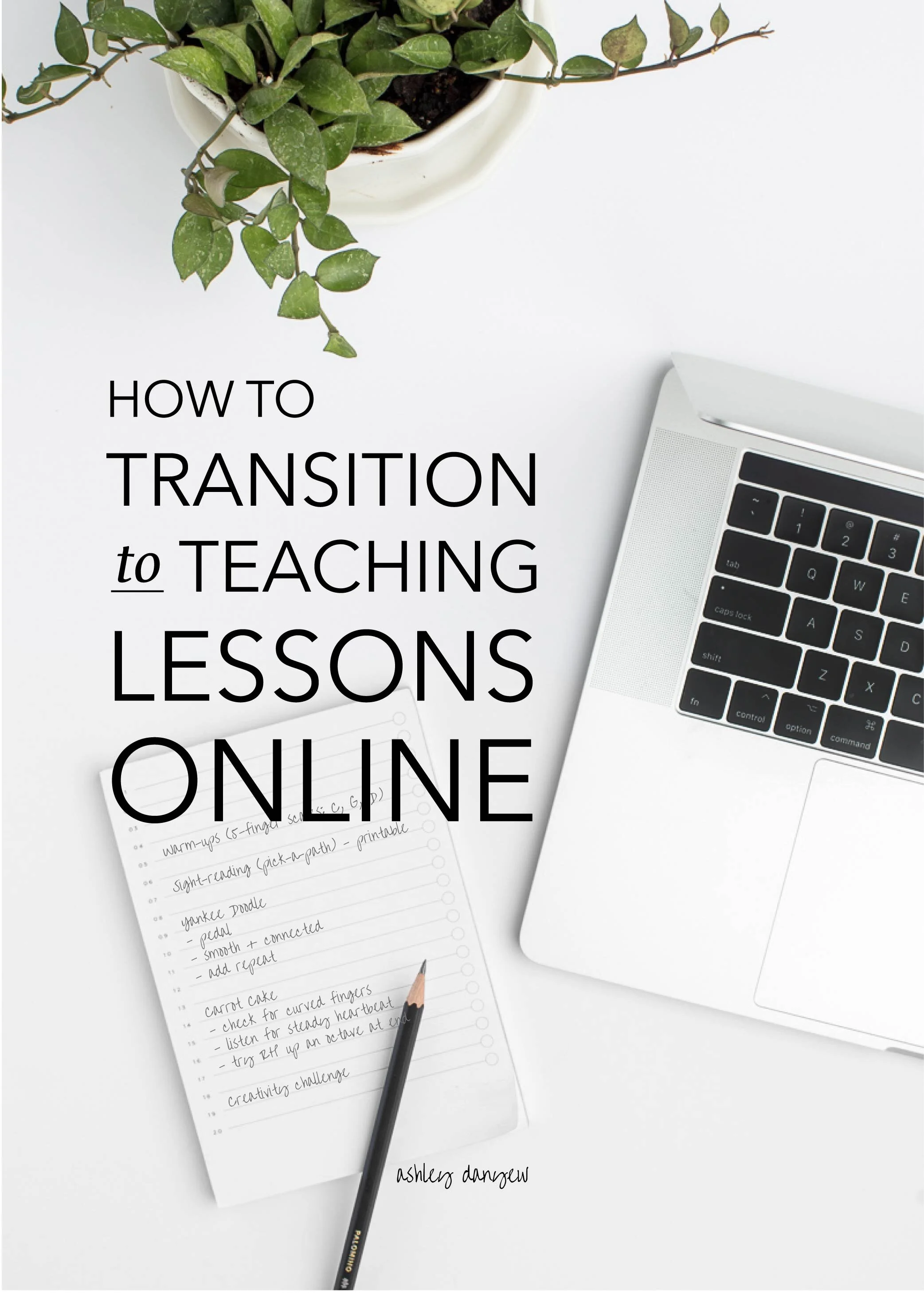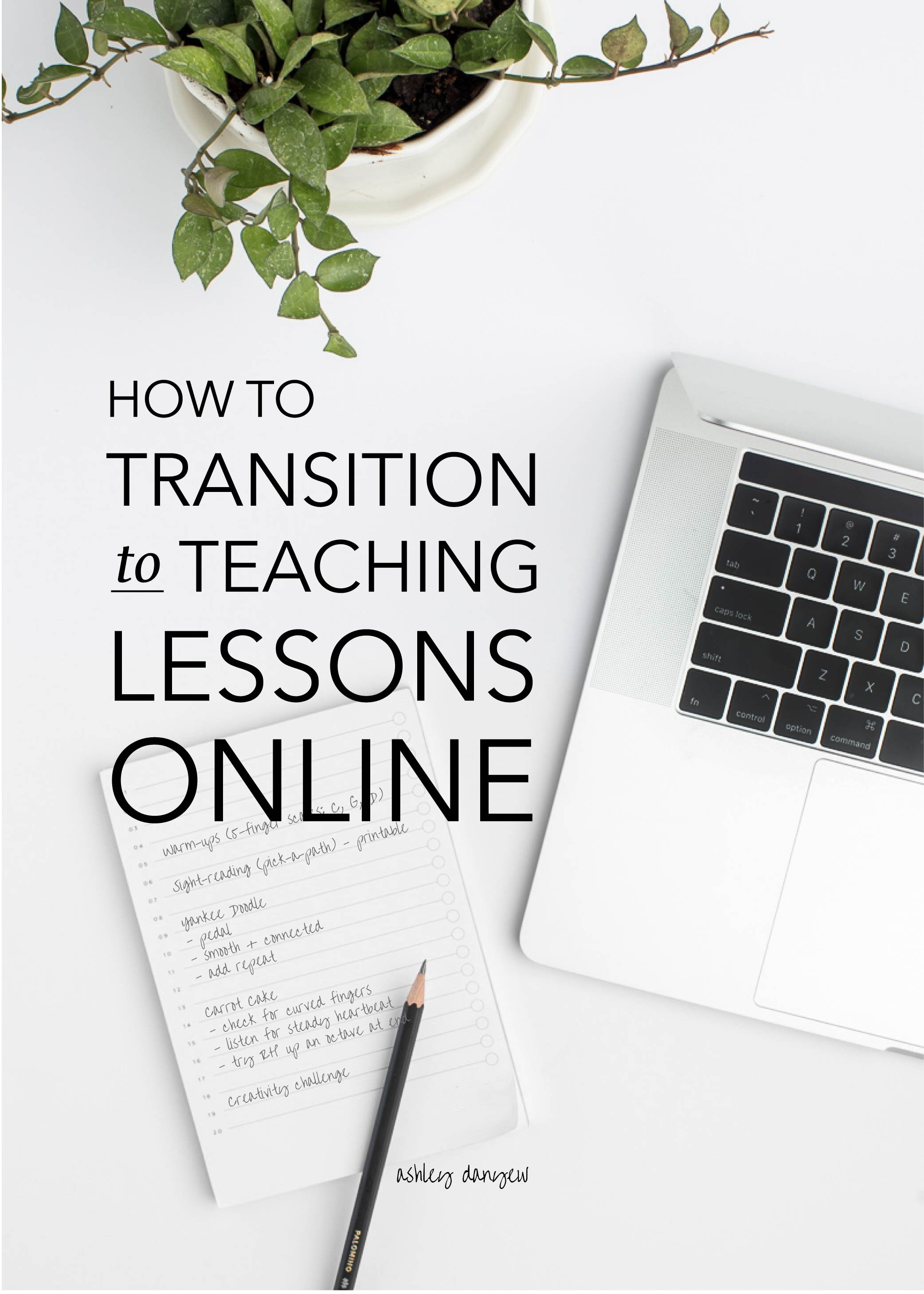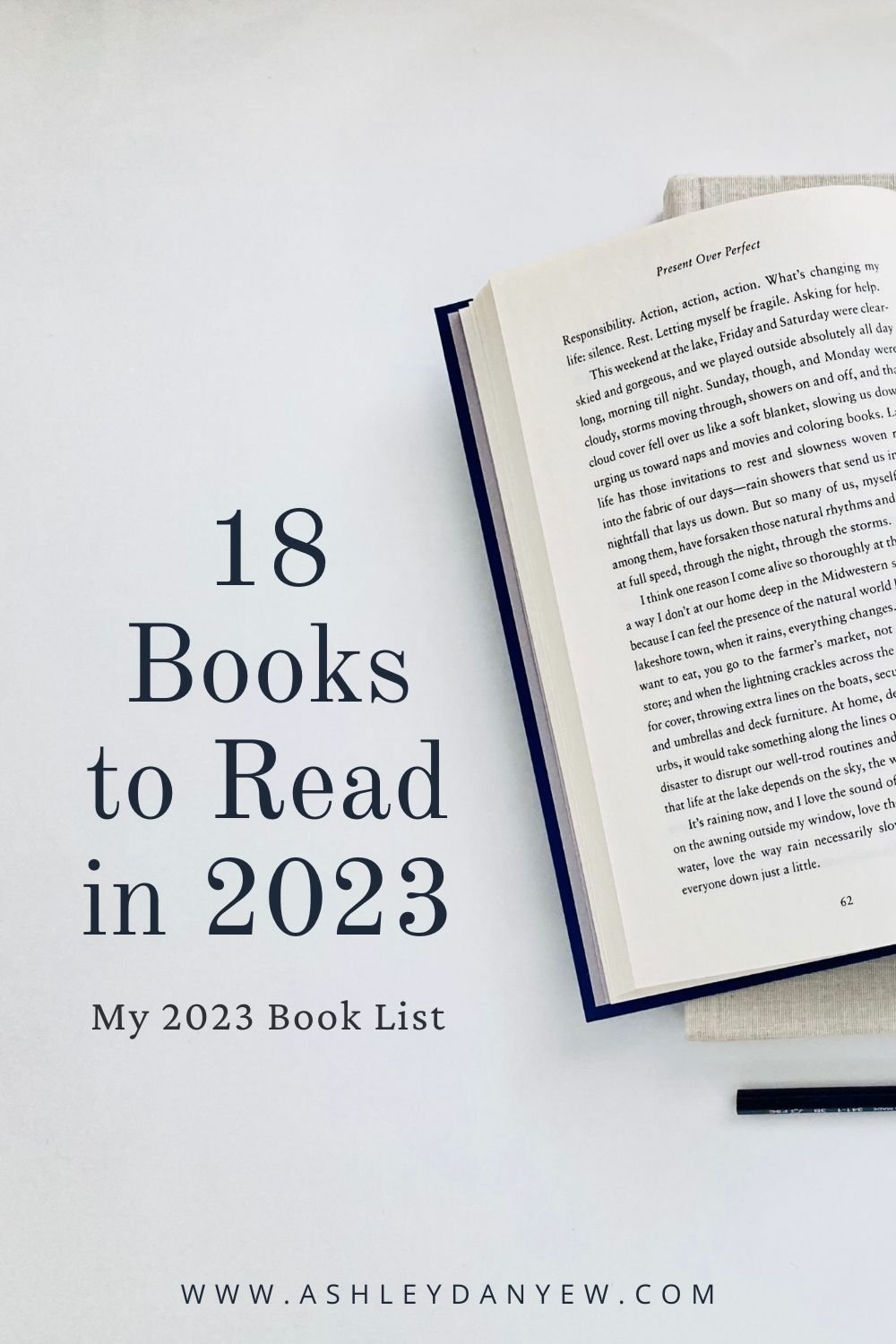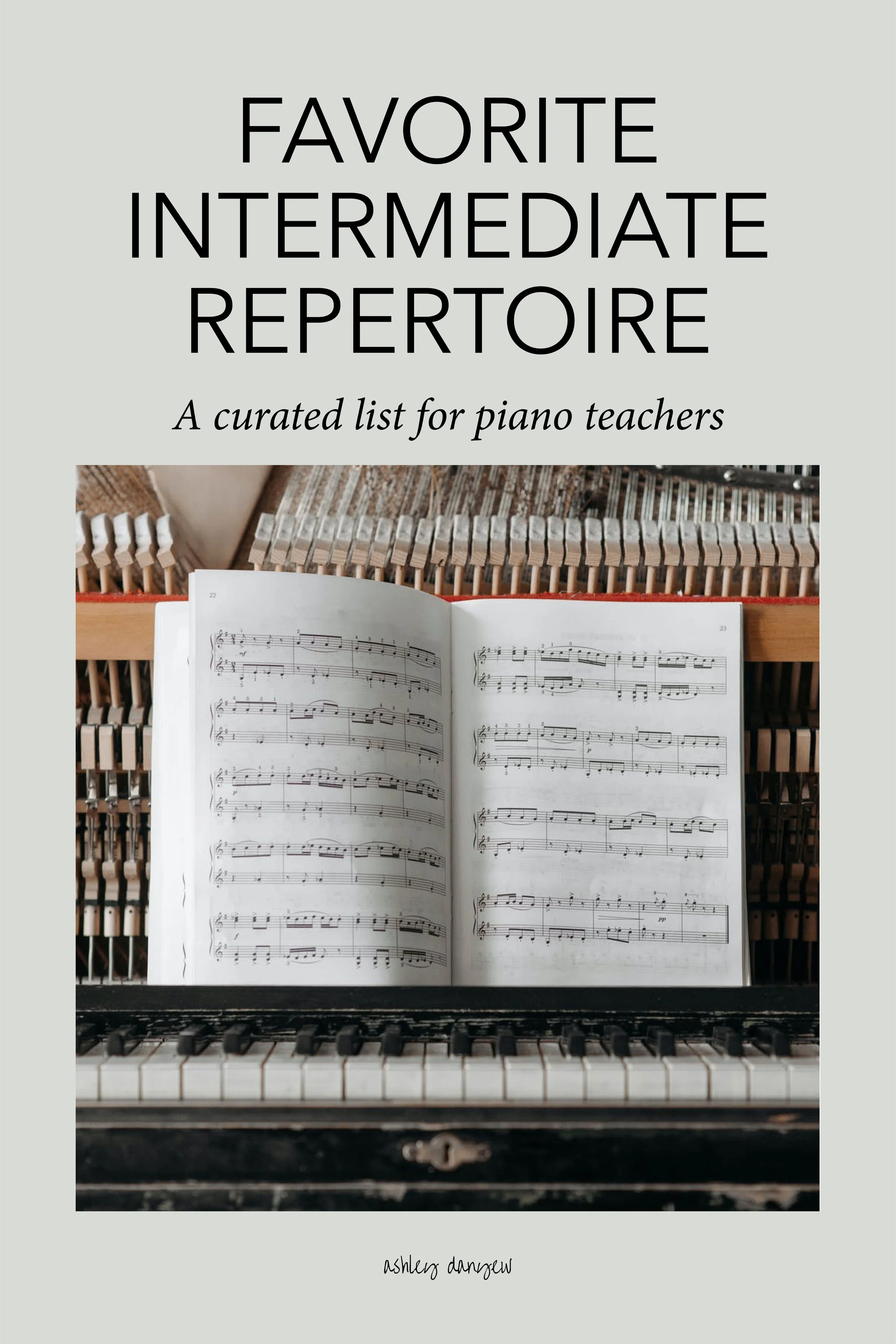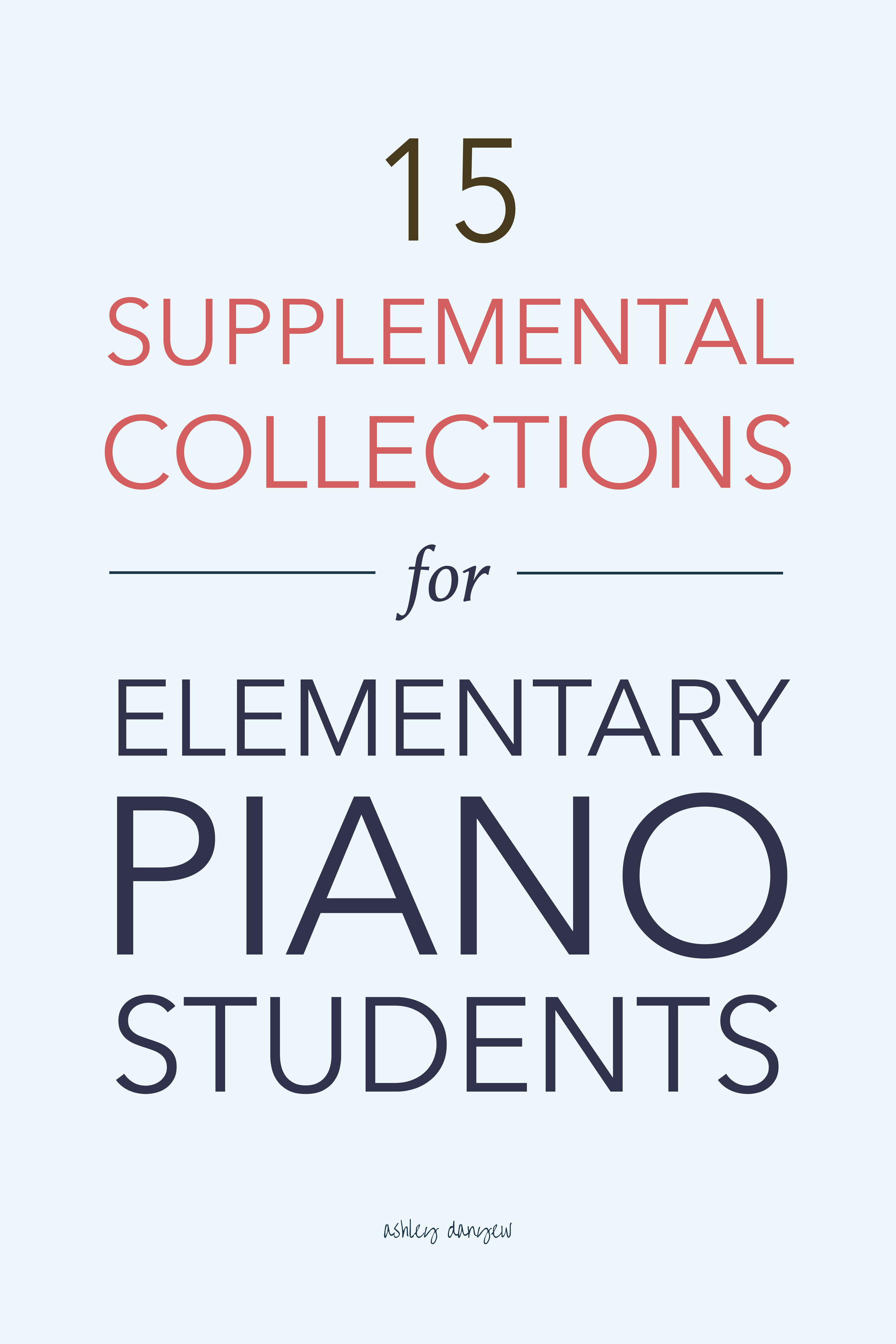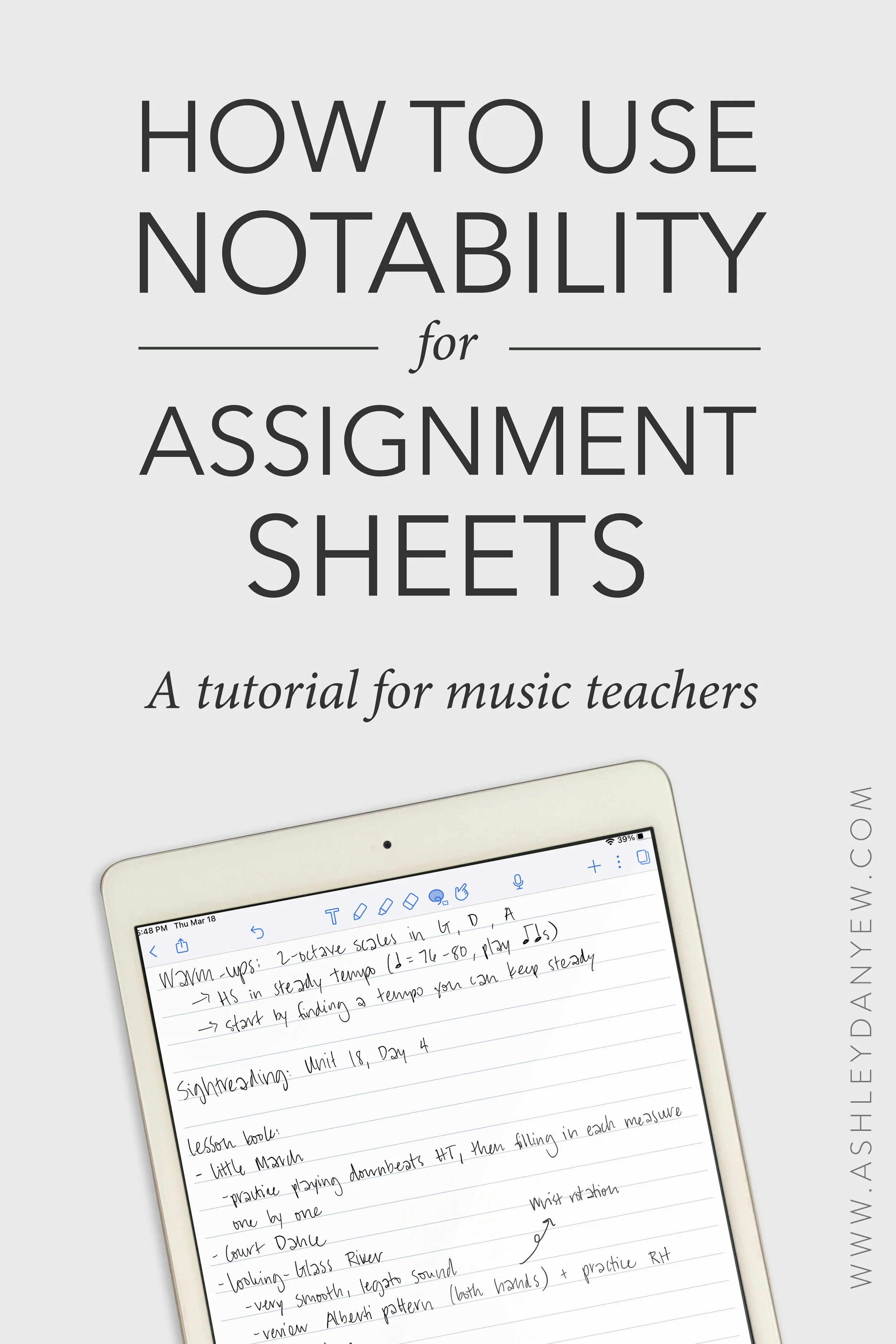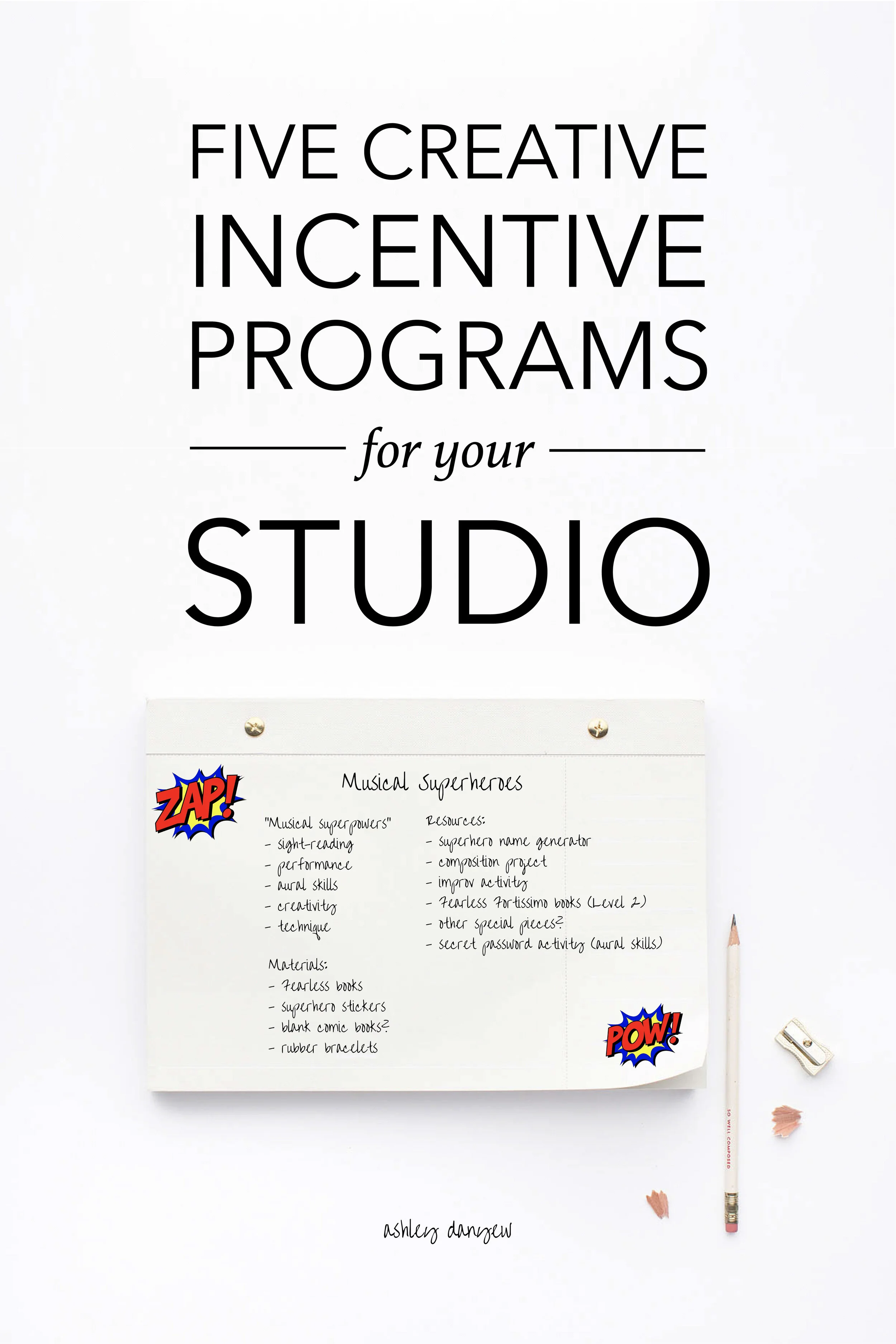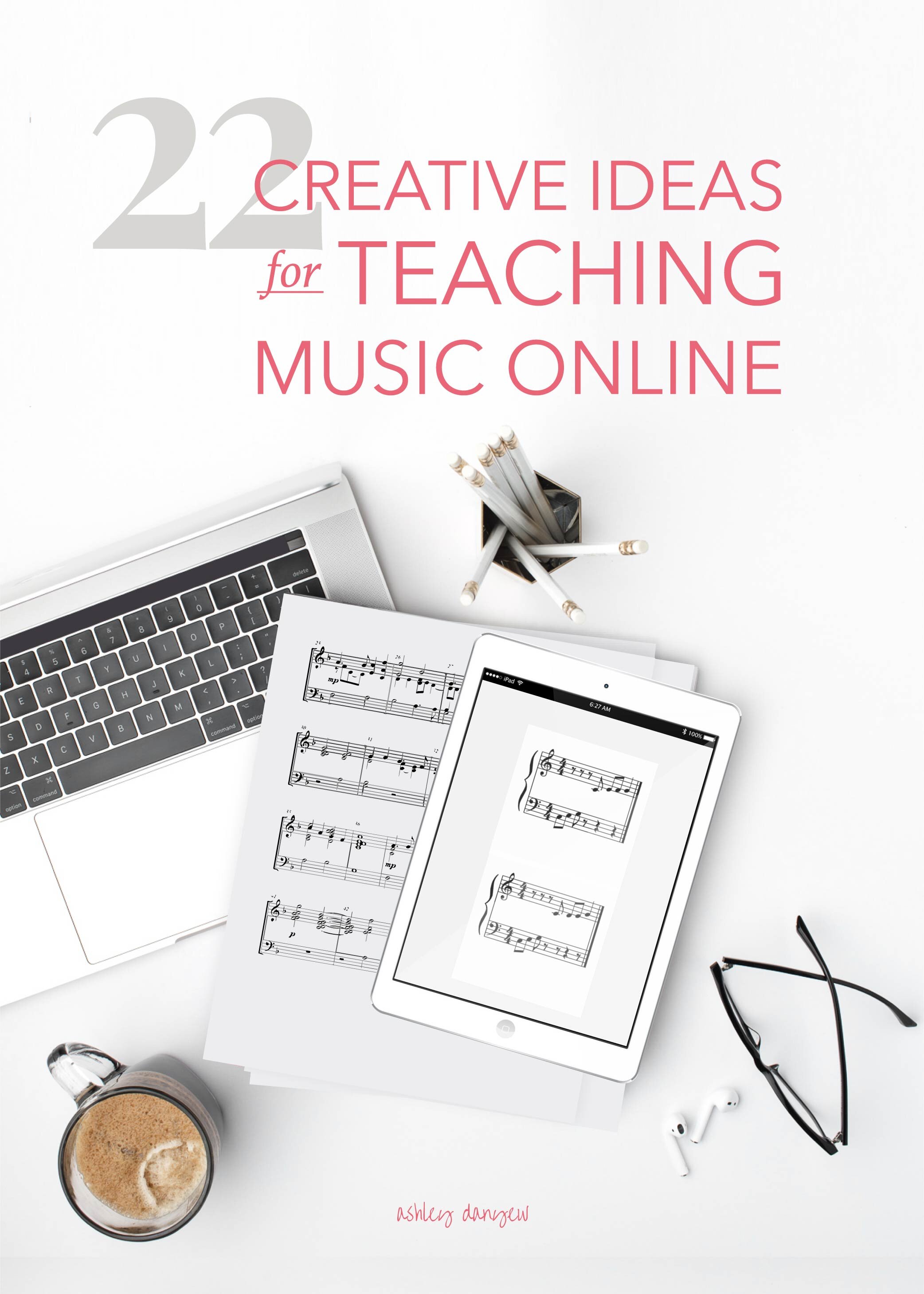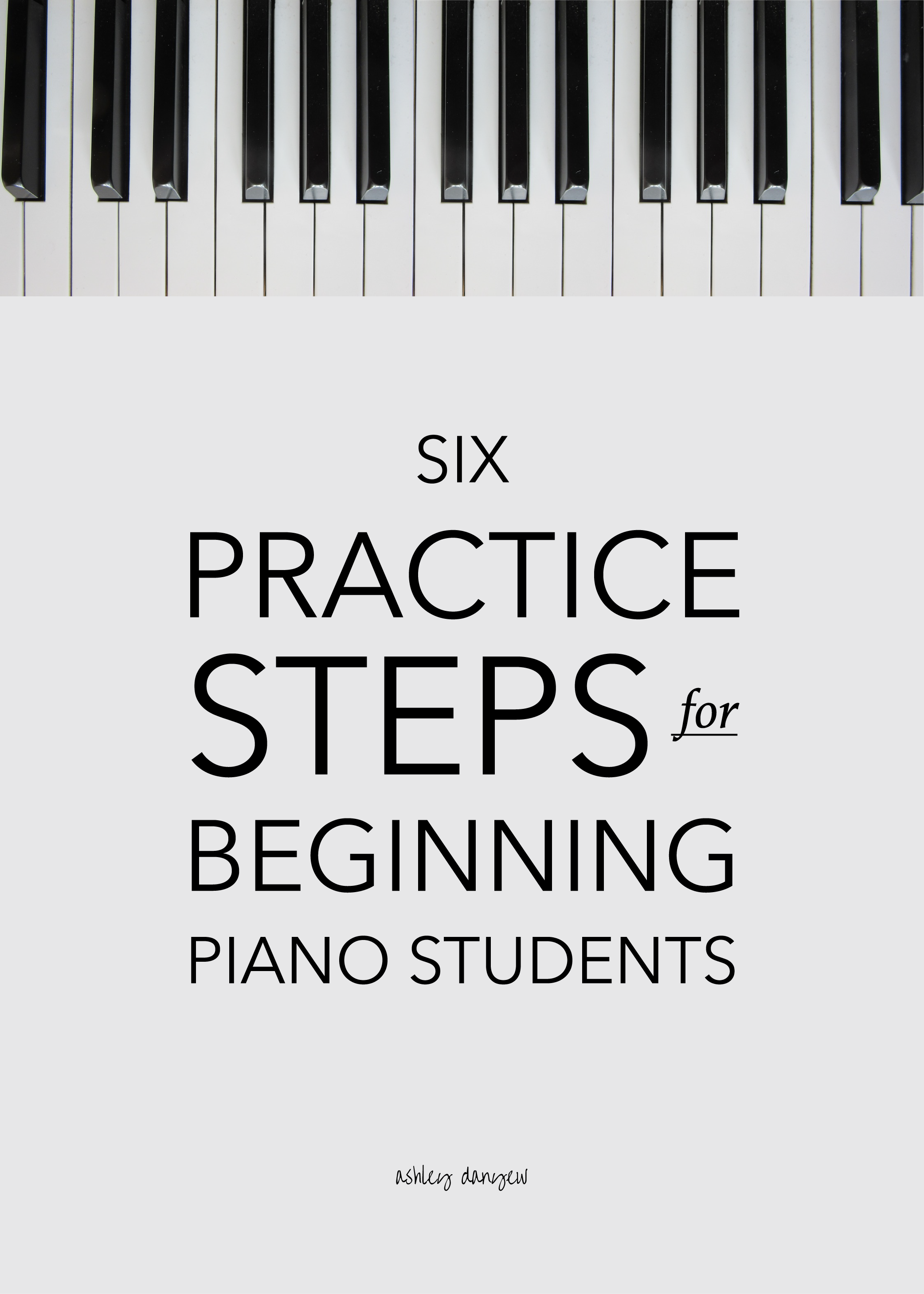We’re living in unprecedented times.
With the recent worldwide outbreak of COVID-19, more and more schools and studios are choosing to close and transition to remote learning.
Maybe you’re like me in thinking that some subjects lend themselves well to being taught online: history, language, math. But music? How do you teaching piano to a 1st grader online? How do you teach choir or band? How do you teach group lessons?
This week, numerous music educators have put together resources, kits, and teaching guides to help others transition to online learning, learn about tools that are available, and get ideas. There are Facebook groups and webinars, blog posts and Google Docs summarizing all the music-related tech tools that are offering special discounts right now.
Here in Rochester, NY, schools are closed and moving online until further notice.
As such, I’m transitioning my studio to online learning. Today, I want to share what that looks like, including:
The notes I’m sending home to parents
Three models for online education I’m offering to all my students (K-10th grade)
Steps I’m taking to plan and prepare for this change
Resources and printables I’m pulling together for the next few weeks
Tools I’m using on the tech side of things
My best recommendations for studio teachers in this situation
How to Transition to Teaching Lessons Online
*Disclosure: I get commissions for purchases made through links in this post.
Planning and Preparing
If you have the luxury of time to prepare to go online, spend some time thinking about the things you’ll need to have in place to ensure this transition goes smoothly for you, your students, and their families.
Here are a few things to consider:
Make a list of pieces your students are working on so you have a record.
Scan or copy any music you don’t have in your library so you can reference it at home, if needed.
Take a picture of their most recent written assignment so you have a record of where you left off.
Pull together resources and activities that can be shared virtually and games or printable worksheets that students can do somewhat independently. Note: Teach Piano Today has tons of printable games, worksheets, theory review pages, and improv activities. I spent time yesterday pulling these together and organizing them by level (Prep A through Level 2) so I have 6-8 things ready-to-go for each student. Download a copy of my planning document here.
Research tech options for teaching, recording, and sharing content (more on that below!).
Free Download: Games and Activities for Online Piano Lessons
Here’s a collection of free printables, games, and resources from my favorite piano-teaching blog, Teach Piano Today. These are the activities I’m planning to use with my youngest (K-2) students over the next few weeks, including some really fun St. Patrick’s Day-themed games!
Models for Online Learning
There are a few primary models for teaching private lessons online:
Live sessions via Skype, FaceTime, or the like - these will most likely take place during the student’s regular lesson time.
Recorded sessions - students will record a few of their pieces to send to you, then you’ll send back a video recording with comments and practicing suggestions during the week.
Pre-recorded lessons - you’ll record a lesson including warm-ups, an introduction to and demonstration of a new piece (singing, chanting rhythm, and playing), a written worksheet, and perhaps a rhythm game. Note: If you’re using the Wunderkeys series by Andrea Dow, make a video of you reading the story and give prompts for students to try things on the keyboard as you go. I’m planning to do this for my K/1 students.
A virtual classroom - this might work well for music theory or a group class. This could be done using Facebook Live or a virtual classroom tool like Google Classroom.
A digital portfolio - send home weekly assignments for practicing, improvising, composing, listening, etc. and have students document and submit their work through a site like Seesaw or Google Drive.
Don’t feel like you need to offer all of these options! Instead, think about which models will be easiest and most accessible for your students and their families and what will work best for each student during this time.
Communicating with Parents
Next, draft an email and/or social media post to communicate with parents and guardians. Think about questions they may ask:
When will these changes will go into effect?
How long will this last?
What options are you offering?
What will be expected of my child during this time?
What will be expected of me during this time?
What technology do I need to have at home to make this work?
Here are the emails I’m sending to my parents this week:
For younger (K-2nd grade) students:
Hi _____ (parent/guardian name,
Given the recent announcement about schools closing due to COVID-19, all in-person lessons (for students of all ages) will be moving online.
I am working to develop online lesson options that are completely customized to each student. Here are two options for ______ (student name):
Option 1
I will send a pre-recorded video lesson including warm-ups, a new piece, a written worksheet, and a rhythm game. You can print the materials and let ______ (student name) watch this when you would normally sit down to practice.
Option 2
Send recordings of _____ (student name) playing three of their assigned pieces and I will send back a video with some comments, demonstrations, and notes for practicing in the next week. I will also send a warm-up and sight-reading exercise or game.
We can also switch between these two options in the coming weeks. 😉
Let me know which option would be easiest for you!
All best,
Ashley
For older (3rd-10th grade) students:
Hi _____ (parent/guardian name),
Given the recent announcement about schools closing due to COVID-19, all in-person lessons (for students of all ages) will be moving online.
I am working to develop online lesson options that are completely customized to each student. Here are two options for ______ (student name):
Option 1
We can have a live lesson via Skype, FaceTime, or Zoom. This lesson can be available as close to your normal lesson time as possible (I also have some morning/early afternoon availability, if that’s more convenient).
Option 2
Have _____ (student name) send me video recordings of three assigned pieces and I will send back a video with some comments, demonstrations, and notes for practicing for the next week. I will also send some technique and sight-reading exercises.
We can also switch between these two options in the coming weeks. 😉
Let me know which option would be easiest for you this week!
All best,
Ashley
I’ve already had a few parents respond that their child is familiar with FaceTime and Zoom and either would work for moving lessons online.
One note about this: Try to make this as easy for parents as possible.
Stick with simple technology that they (and your students) have probably used before and a relatively easy process for moving things online. Try to think about activities and assignments you can give your students that won’t require a parent sitting with them. Choose games and worksheets they can do on their own and consider recording a brief introduction (and maybe a demonstration of how to play or complete the worksheet) that students can watch.
Tools for Sharing Content
Here are a few helpful tools for sharing and posting content with your students:
Email
If you use email to communicate with parents already (like I do), this is a simple way to send home assignments, exchange notes, and stay connected.
Website
If you have a website (or page) for your studio, consider sharing general content, resources, and assignments on a central landing page or blog. For instance, “Here’s this week’s assignment for Level 2 students…"
Set up a free Google Drive account and upload documents, resources, sheet music, teaching demonstrations, videos, etc. Create a folder for each student and set the privacy so that only they have access.
If you have a studio page on Facebook, this is a great place to share links to general information and printable resources. Use Facebook Live to teach group classes or Facebook Messenger chat to teach live sessions with individual students.
Send home a link to the Chords page to review chord patterns in major and minor in all keys.
A web- and app-based digital portfolio for students to share their work through pictures, drawings, and recordings. Note: Victoria Boler just posted a free set of SeeSaw learning activities for reinforcing “la” using the song Acka Backa. Download here.
Tools for Teaching Live
If you’re planning to teach live lessons, here are a few tools I recommend:
FaceTime
An easy way to video-chat with individual students using an iPhone, iPad, or MacBook. Easy to use, and most parents/students are probably already familiar with it!
A free downloadable app for video-chatting, though the sound quality can sometimes be lacking. (Make sure to download it in advance and check for updates 10 minutes before your call.)
A free video-conferencing tool. Schedule “meetings” in advance and get unique links to send out to each student. The free account gives you an unlimited number of meetings (+ free recording) and unlimited time for 1-1 calls, but group meetings are limited to 40 minutes.
Right now, they are lifting the 40-minute time limit on free Basic accounts for K-12 schools affected by the Coronavirus. Just fill out this form (using your school email address).
Tools for Pre-Recording Content
If you’re planning to pre-record lessons or content for your students, here are a few tools that might help:
QuickTime
A free tool for making video, audio, or screenshare recordings.
Keynote for Mac
An easy way to make (and animate!) slides and create screenshare recordings (record right in the program and export as a video file). I’m planning to use this tool to make pre-recorded lessons for some of my littlest students.
Blue Yeti Microphone
My all-time favorite microphone for recording directly into my MacBook. I use it for recording spoken directions as well as playing demonstrations. This is how I have it set up in my living room so I can record everything at the same time:
Looking for more microphone recommendations? See this list.
A free tool for making video or screenshare recordings (with or without "talking head” - a cropped video of you talking down in the corner).
Right now, they are offering unlimited recording on their free plan, a 50% discount on paid plans, and an extended 30-day free trial (through 7/1/20).
Also, if you’re an educator using Loom in a classroom setting, you can use Loom Pro for free, forever.
Your phone
An easy way to make an audio recording (Voice Memos app) or quick video (Camera app) to send to a specific student.
Innovative Assignments
By now, I hope you’re beginning to see that there’s a lot we can do online with the technology we have available.
That being said, some things will be a little different and more challenging to teach in a virtual setting. It goes with the territory. But don’t let that stop you! Instead, think of some innovative assignments you can give your students during this time:
Send home a listening assignment.
I recommend this assignment for middle and high school students.
Choose a composer, type of work (e.g. sonata, prelude/fugue, theme/variations, piano trio), or style period and create a playlist on Spotify or YouTube. Ask them a few questions about form, dynamics, style, instrumentation, and overall impression and have them submit their written (or audio) responses.
Give your students a Research assignment.
Assign your older students a composer to research. Have them write down when they were born and when they died (if applicable), where they lived/live, style period, interesting fact, and primary instrument. Then have them listen to at least three different works and jot down their observations. Have them give a virtual presentation (live or pre-recorded).
Keep a listening log.
I love these ideas from Elizabeth Caldwell of Organized Chaos for creating listening or singing logs. This would be a great activity for younger students! She writes:
Listening log: have students write down music that they hear each day. Depending on the age, they can also record information about the songs, like the title/ artist, genre, mood, time signature, tempo, instrumentation, etc, or they could draw a picture in response to the music.
Singing log: have students write down songs that they sing each day. They can sing along with a recording, sing by themselves, or sing with their family. (source)
Host a studio-wide composition challenge.
The New School for Music Study (NSMS) hosted this challenge for their students a few years ago:
The New School for Music Study is pleased to announced the 14th annual Student Composition Contest. The theme for 2016 is Colorful Compositions! Students are encouraged to create a composition that represents a color or an image that evokes an image of a color (Singin’ the Blues or Nightfall). Students should record their composition, write a score for the composition, and send it to their private lesson teacher. Winning compositions will be selected to be showcased during our 2016 Student Spring Recital Series. Compositions are due by Saturday, April 30. Happy Composing!
Send home a musical creativity prompt each week.
This is great for young students and requires little to no parental involvement. Here are 40 ideas to inspire musical creativity in your students.
Encourage musical exploration and play.
Send home a set of printable rhythm cards and encourage your students to create their own patterns. For an extra challenge, have them create a rhythmic duet that they can do with a parent or sibling!
Use a site like Google Chrome Music Lab to experiment with rhythm, melody, Kandinsky (pairing visual art with sound), arpeggios (a great exploration of harmony and the Circle of 5ths), and creating their own songs. In Song-Maker, students can save their work and share it using a unique link.
Closing
This is all new territory for me, as I’m sure it is for many of you, as well!
Right now, I’m planning to keep online lessons fairly simple:
We’ll use FaceTime or Zoom for live sessions (I usually set up my MacBook on a music stand next to my piano at home).
I’m using Keynote to create screenshare recordings to talk my younger students through printables, games, and sight-reading activities (I shared a sneak peek on Instagram yesterday!). I’ll record these sitting at my piano so I can play a few examples, if needed.
I may use my phone or laptop to create a quick intro video for each student and I’ll use my phone if I need to take a quick video of me playing something (so students can see my hands from above).
I hope all of this helps you plan and prepare your studio for a transition to online learning in the event that you need to make the switch for a while.
Has your teaching been affected by COVID-19?
Are you transitioning to online lessons in your studio or community music program? What tools or resources are you finding most helpful during this time? Please share them below in the comments!

